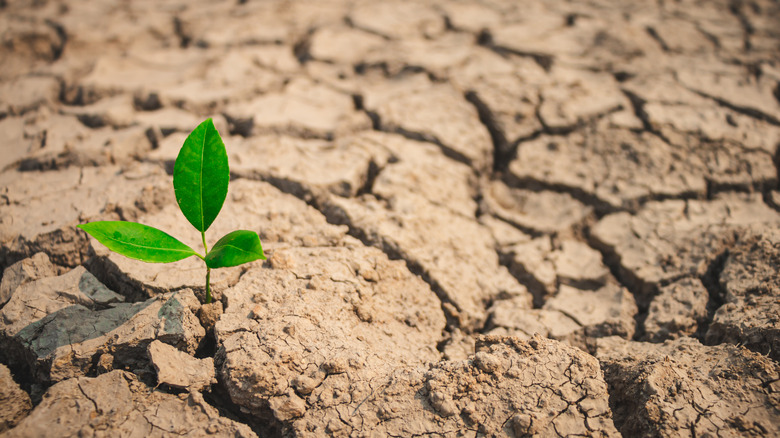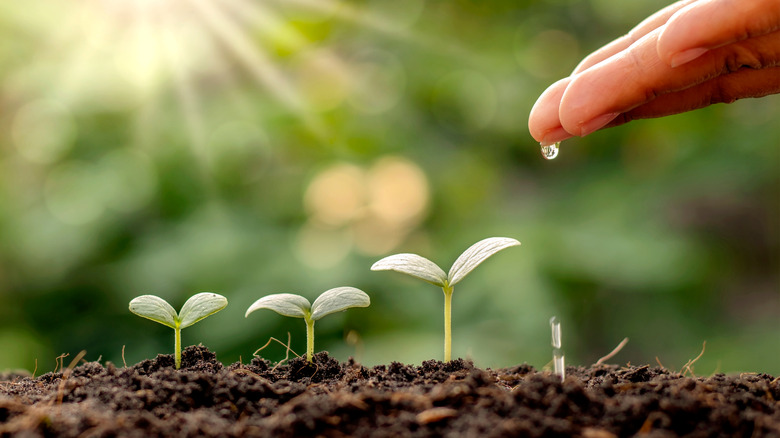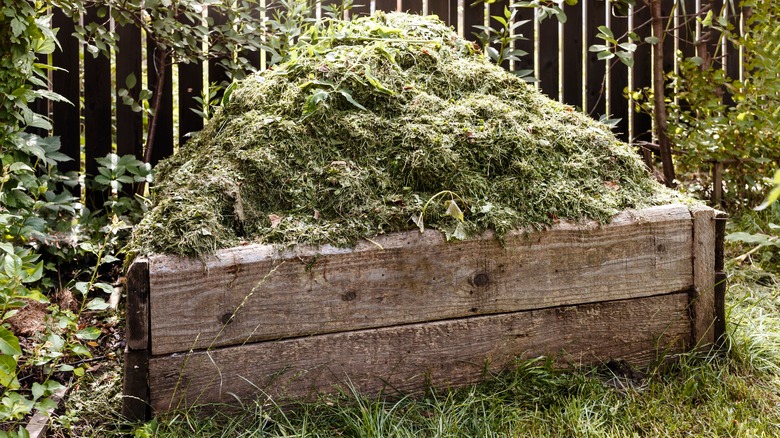With A Little TLC The Poor Soil In Your Garden Can Be Revitalized
It's a gardener's worst nightmare: dead, lifeless soil. Do Not Disturb Gardening notes that it'll generally take on a dull, lifeless brown hue and can't hold its form. As such, it simply crumbles into nothingness, so don't expect it to work wonders for your spring harvest, either. (We already know how depressed dirt is tightly intertwined with climate change, per BBC.)
But green thumbs, don't despair. Looks can be deceiving, and chances are that your garden hasn't lost all hope — so neither should you. If you want to grow a seriously sweet bumper crop or try your hand at an edible flower garden, perhaps now is the time to invoke your inner Dr. Frankenstein and bring your soil back to life. While it might seem like a long shot (depending on your soil's condition), there's no hurt in giving it a try. After all, what's the worst that could happen? You could invest around $600 (give or take) for topsoil rejuvenation, writes Lawn Love, or wait a few seasons for the soil to show new signs of life.
Just add water
Sometimes all it takes to "reanimate" a thirsty human is a tall glass of fresh water. The same can almost be said for soil. However, dirt that is too wet will make any plant life rot from the bottom up.
Before starting your seeds or even figuring out what you're planting, you should test your soil's water level. Start by digging an eight-inch hole and grabbing a fistful of earth, then squeeze it into a ball. If it crumbles, you have low-moisture soil and should water it. (This is the best-case scenario.) If it holds its form, that's a sign that it has plenty of moisture. Next, try pressing one of your fingers into it with your other hand. If it crumbles, it's likely willing to work with you. If it stays in a clump, its water content is too high.
To dry out overly saturated soil, plant flowers, shrubs, or ground covers that thrive in wet dirt. For example, creeping Jenny (lysimachia nummularia) may have a somewhat eerie name, but it grows quickly and thirsts for moisture-laden earth. Irises, Japanese Primrose, and cardinal flowers also prefer wet soil.
Give it some nutritious food
Whether you're a human needing a hearty breakfast, a turtle noshing down on some jellyfish, or a flower basking in the sunlight, all living things need sustenance to survive. Your garden's soil is much the same. One surefire way to help revitalize your garden beds is by adding organic matter, which can be sourced in various ways. You can purchase worm castings, chicken manure, or even mushroom compost, notes Joe Gardener, which, once mixed into your garden, will begin to feed your nutrient-parched dirt. However, the most financially savvy way to procure compost for subpar soil is to add leaves or grass clippings from your yard. Just keep in mind that you'll need to routinely add the compost to keep it rejuvenated.
Having your soil routinely tested is also never a bad idea: You can go the DIY route or have a reading done by a professional. In a nutshell (which also makes excellent compost, by the way), a soil test will give you valuable information on your garden's soil composition (sand, silt, or clay) and pH level, which can help you know what type of plants you will be able to grow successfully and how to fortify your soil.


